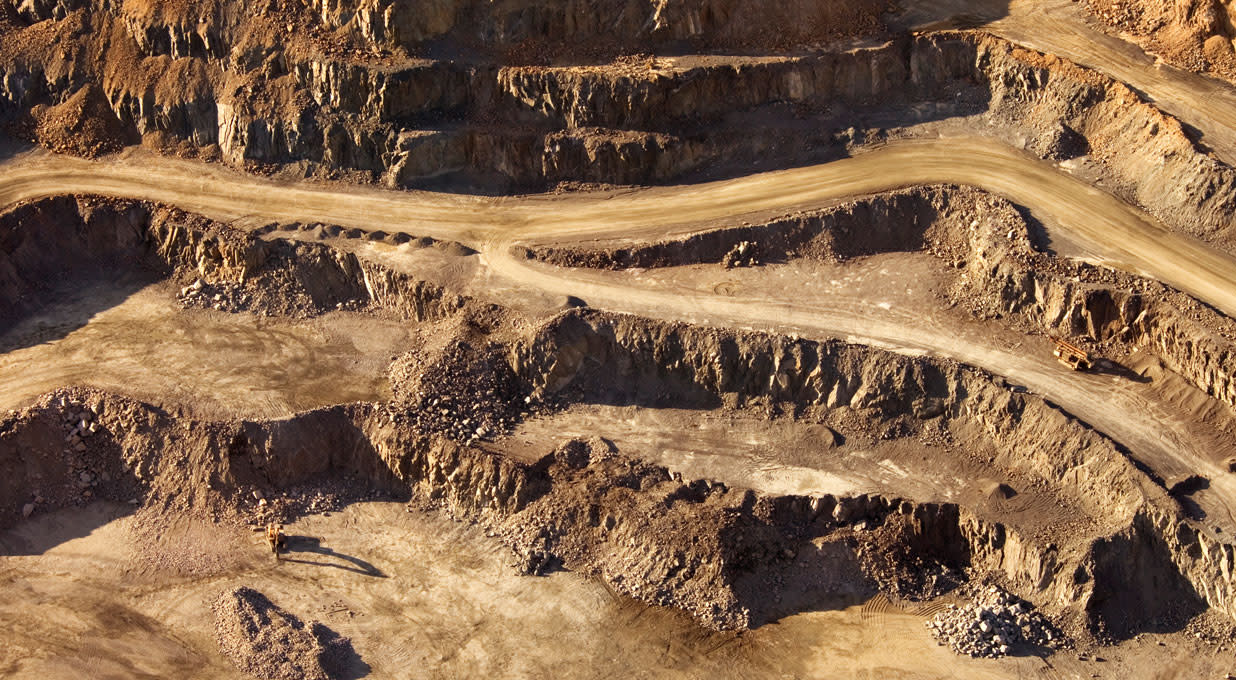Barrick has made the decision to temporarily suspend operations at its Loulo-Gounkoto mine in Mali.
For the past couple of years, Barrick has been involved in disputes with the local authorities over a contract based on new mining rules, which look to allocate a larger portion of mining profits to the local government. The mine is currently owned 80% by Barrick, with the Mali government owning 20%.
In recent weeks these disputes have escalated, culminating in the seizure of gold stockpiled at the mine which has led Barrick to suspend operations.
In the most recent quarter of the current financial year, Loulo-Gounkoto accounted for 15% of Barrick’s total gold production.
The shares were down 1.9% when the news broke.
Our view
Barrick’s come under some pressure in recent months as tensions have escalated with the government in Mali, ultimately leading to the seizure of assets and a shutdown of operations. Given the Loulo-Gounkoto operation accounts for a decent chunk of Barrick’s gold production (15% in Q3), this will have a material impact on performance in 2025.
Toward the end of November Barrick set out a new 5-year plan, and flagged continued production challenges in the near term, which will now be exacerbated by the Mali shutdown. The good news is that expectations have now been reset and elevated gold prices should continue to prop up performance while Barrick works through its challenges.
Sticky inflation has been a persistent thorn, and Barrick has missed its original gold cost guidance for two years in a row. A mix of lower production and increased maintenance have also been adding pressure to the cost line. We don’t see much near-term let-up, as higher investment at the key Nevada sites along with continued pressure on US wages are both ongoing headwinds.
Squeezing more from existing mines can be a particularly powerful driver for the group - since costs rarely increase in line with output. On that note, the expansion of the low-cost Pueblo Viejo mine and restarting of the Pogera mine are both positive catalysts for production over the short and medium term.
Copper is becoming an ever-growing part of the mix too, with plans to more than double production levels by 2029. That’s going to cost though, with planned capex at the group level of $16bn over the next 5 years coming in a little hotter than some had expected.
Last we heard, prices were high enough that free cash flow had returned, but the net cash position seen for parts of last year has disappeared. Debt's still low so there are no immediate liquidity concerns, but it highlights the speed at which things can change.
2025 looks set to be another choppy year and conflicts have continued to cause turbulence across the globe. The general level of uncertainty should help keep gold prices elevated, though there are no guarantees.
Recent production challenges and more recent clashes with the Mali government mean the valuation’s been under some pressure. We’re mindful of the challenges in the short term, but still feel Barrick’s large, diversified, footprint is one of the better options in the gold mining sector. Of course, there are no guarantees.
Environmental, social and governance (ESG) risk
Mining companies tend to come with relatively high ESG risk. Emissions, effluences and waste, and community relations are key risk drivers in this sector. Carbon emissions, resource use, health and safety and bribery, and corruption are also contributors to ESG risk.
According to Sustainalytics, Barrick’s management of material ESG issues is strong.
Barrick has robust ESG policies with best practices like performance targets and independent certification. It has a strong climate change strategy and effective water risk management, using various tools to assess water risks. Barrick is aiming for net-zero emissions, with a 2030 target to reduce operational greenhouse gas emissions by 30% from 2018 levels. Government relations are key, as we’re seeing play out in Mali, and Barricks exposure to areas like Latin America and Africa adds an extra layer of risk.
Barrick key facts
All ratios are sourced from Refinitiv, based on previous day’s closing values. Please remember yields are variable and not a reliable indicator of future income. Keep in mind key figures shouldn’t be looked at on their own – it’s important to understand the big picture.
This article is not advice or a recommendation to buy, sell or hold any investment.No view is given on the present or future value or price of any investment, and investors should form their own view on any proposed investment.This article has not been prepared in accordance with legal requirements designed to promote the independence of investment research and is considered a marketing communication.Non - independent research is not subject to FCA rules prohibiting dealing ahead of research, however HL has put controls in place(including dealing restrictions, physical and information barriers) to manage potential conflicts of interest presented by such dealing.Please see our full non - independent research disclosure for more information.


